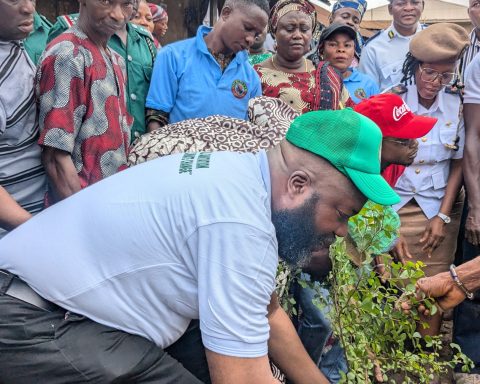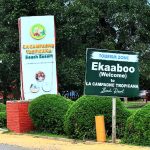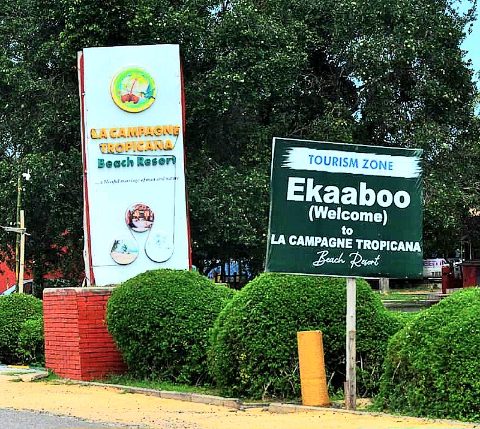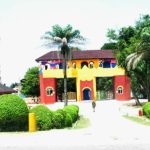
“It is a pity that history is no longer taught in schools in Nigeria” said Otunba Akinboboye as he positioned to release his product of the week, this time around, the number 46th.
In his view, a knowledge of history is integral to cultural identity. Without an understanding of history, people may find it challenging to understand their own identities, values and traditions, which in turn impacts negatively on the sense of community in people with a common heritage.
Akinboboye said that, in recent times, Nigerians had been astonished to learn, through social media, about the Wall or Moat (‘Iyanuwo’) constructed by the Old Benin Kingdom, which was a series of massive walls built of earth encircling Benin City. Construction of these walls commenced in 800 AD and continued until 1460 AD. Some traditional sources claim that the walls spanned approximately 16,000 kilometres (9,900 mi), enclosing about 6,500 square kilometres (2,500 sq mi) of land. Although it has been claimed Iyanuwo was 4 times longer than the Great Wall of China, which was built between the 3rd century BC to the 17th century AD, the Guinness Book of Records ranks Iyanuwo second to the Great Wall of China.
Sadly Iyanuwo was destroyed by the British in 1897 in the “Punitive Expedition” that took place in retaliation for the so-called “Benin Massacre” (a surprise attack on British forces attempting to capture Benin City) and which expedition was led by Rear – Admiral Harry Rawson.
Scattered remains of Iyanuwo exist today, although many are being torn down to make space for real estate development.
Otunba Akinboboye noted that these ancient city walls were not peculiar to Benin, as similar structures existed as far afield as Kano and Ijebu.
The Kano City Wall is a 14km radius earth structure with Dala Hills, Kurmi Market and the Emir’s Palace as associated features.
The ancient Kano city walls were designed to provide security. Their foundation was laid by Sakri Gijimasu from 1095 – 1134 AD and completed in the middle of the 14th Century during the reign of Zamnagawa. In the 16th century, the walls were extended to their present position. The walls incorporate gates used to control the movement of people in and out of the city.
Dala Hill was the site of an ancient settlement dating back to the 10th century AD and is the origin of the city of Kano. Kurmi Market is one of the oldest and largest local markets in Africa. It served as an international market on the trans – Sahara trade route offering North African and some European goods in exchange for domestic goods. The market was, and still is, laid out in lanes. Each lane consists of traders offering identical goods, e.g leatherwork, textiles, iron and brass work, spices and so on.
The Emir’s Palace, which is divided into 3 sections was built by Muhammadu Rumfa who ruled Kano from 1463 to 1499. It has three gates; Kofar Kwaru, Kofar Fatalawa and Kofar Kudu. The palace is divided into 3 sections, the central part of which houses members of the Emir’s family.
Otunba Akinboboye then proceeded to speak about the city walls in Ijebu which are known as Sungbo – Eredo. He noted that these walls are a system of defensive walls and ditches to the southwest of Ijebu Ode. These walls are 70 foot tall, thick crimson in colour and stretch a 100 miles.
Sungbo – Erodo was constructed as defence walls surrounding the Ijebu Kingdom and was built between 800 and 1000 AD. It was a 10,000-mile (16,000-kilometer) long network of walls that were partially hidden under the area’s rainforests and partly covered by patches of moss.
Otunba Akinboboye is convinced that, appropriately packaged, historical sites in Nigeria could provide a viable part of Nigeria’s tourism offerings. He noted that some of the earliest historical sites point to an ancient society that was more advanced and organized than its then western counterparts. It therefore depicts our ancestors as having a standard of living of which Africans can proud and destroys the myths created to depict Africans and Africa as primitive and disorganized.
Otunba Akinboboye revealed that, in 2021, the global heritage market (which is the sector of the tourism market that focuses on presenting historical sites) was valued at USD $556.96 billion and was expected to expand at a compound annual growth rate (CAGR) of 3.8% from 2022 – 2030.
He also noted that, although he had spoken earlier on ancient walls, these were not the only historical sites in Nigeria . If for example, one looked at Nigeria’s colonial era , there are historical sites that include Mary Slessor’s house and grave in Calabar ( she was the missionary who came to Nigeria in the 1880s and stopped the tradition of killing twins in Calabar ), Lord Lugard’s resting house at Mount Patti Lokoja, Kogi state ( he was the first colonial Governor General of Nigeria) , Jaekel House ( built in 1898) which is now a mini museum with artifacts and mementos of Nigeria’s railway history at Railway Compound Ebute Metta Lagos, Cathedral Church of Christ ( built in 1867), the Lagos Colonial Secretariat Lagos (built in 1897) and Lugard Hall Kaduna (built in 1914).
Otunba Akinboboye emphasized that, at the end of the day, what would be important was how tourism entrepreneurs packaged these historical sites and put together utilizing same. From examples seen abroad, some sites were presented using visual tools and technology that would recreate in 3D the initial appearance of these sites and relate oral history about same.
Otunba Akinboboye mentioned that the United Kingdom had been very successful in creating heritage tourism products that attracted tourists from around the world. According to a study carried out on behalf of the National Lottery in 2015, 192 million heritage-motivated trips occurred in the UK, generating £17.5 billion. In that year, heritage tourism also supported 386,000 jobs. It has also been revealed that from April 2023 – March 2024 six million tourists visited UK heritage sights while in 2022 Heritage Houses ( UK) welcomed 21 million visitors to their historic houses and earned £116 million as income from that activity. The total revenue of the various business operating heritage sites in the UK in 2022 was £624 million.
In conclusion, Otunba Akinboboye noted that leveraging off our historical sites and creating the Historical Sites Tourism Products will be ‘taking advantage of our advantages, and creating income flow and jobs today from the work done by our ancestors yesterday.
“It is my hope that this tourism product, stirs issues that creates some light bulb moments in our young tourism entrepreneurs, as developing this specific tourism product should be private sector driven with support from government,” added Otunba Akinboboye.



































